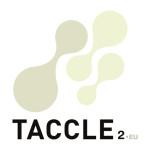Age: 12+ yrs
Overview:
By investigating the most current scientific material regarding human evolution, learners are asked to use their researching, predictive and reporting skills to create a simple web-based thesis on the ‘likely’ future stages of human evolution.
Description:
The teacher must decide how much initial information to provide, but it’s probably a good idea to discuss with pupils (thereby garnering their existing knowledge) the basics regarding evolution in general. A good place to start is www.sociologyguide.com/introduction-to-sociology/human-evolution.php Once learners have discussed the 5 indispensible processes relating to evolution, ask them to gather images for 4 or 5 of our Hominidae ancestors. In their own words and using software of their choice, they then place these images in sequence and write a description for each one. Each description should include and refer to differences in comparison to the previous ancestor.
Having done this, learners must then make a list of any patterns following their visual study e.g. increasingly upright posture, taller, less hair, smaller jaw etc.
Based on their findings, learners are then asked to predict how humans may evolve in future. In 10,000 year increments, ask them to create artistic impressions along with written descriptions of the next 2 or 3 stages in human evolution. Younger learners (or if you feel like letting learners in general have a good time!) could experiment with www.buildyourwildself.com This is particularly useful if you want to discuss issues such as genetic engineering, the affects of environment on evolution or how humans may in future evolve on other worlds.
To finish, ask learners to present their findings and theories. Ensure they give reasons for their theories. Treat it like a PhD viva!
What do I need?
- Internet access.
- Scanner
Hints and tips:
Unless your school has access to fairly sophisticated drawing software, ask learners to draw their illustration on paper before scanning them and uploading them to their online thesis. If you specifically want learners to present their thesis in a web page, check out www.pagetutor.com/html_tutor/index.html for a step-by-step guide to creating your own web page. An easier option would be to direct learners to www.wikispaces.com/content/student here’s one we made with our primary school colleagues www.taccle2e-encyclopaedia.wikispaces.com
Safety:
Online searches can produce images that you’d rather learners didn’t see so ensure you school has appropriate firewall protection.
This post is also available in: Dutch





 English
English Nederlands
Nederlands Deutsch
Deutsch Italiano
Italiano Español
Español Português
Português Română
Română Cymraeg
Cymraeg
This lesson can be a lot of fun, but the secret is to not take it too seriously. The focus should be on the science skills rather than ‘right’ or ‘wrong’ conclusions. Some learners may have created very unlikely images of how humans may eveolve in future but if they collect, organise and report their ideas in an effective and ‘scientific’ way they will have developed the target skills that they can then transfer to other areas, topics or investigations.
I just saw this http://www.123dapp.com/creature/ an iPad app where you design your own creature, thought it might go well with this lesson.
Love it! I can see potential here for developing writing in fantasy genre too. Cheers Ange!